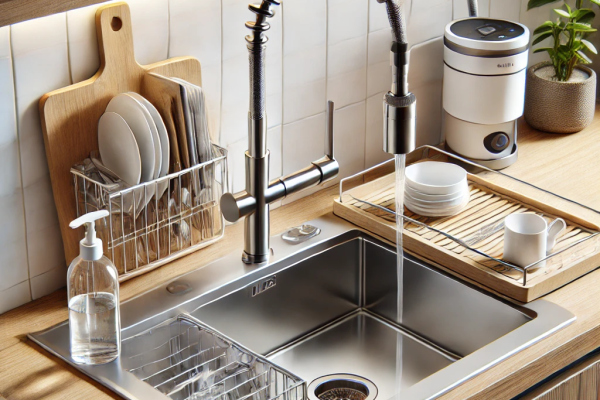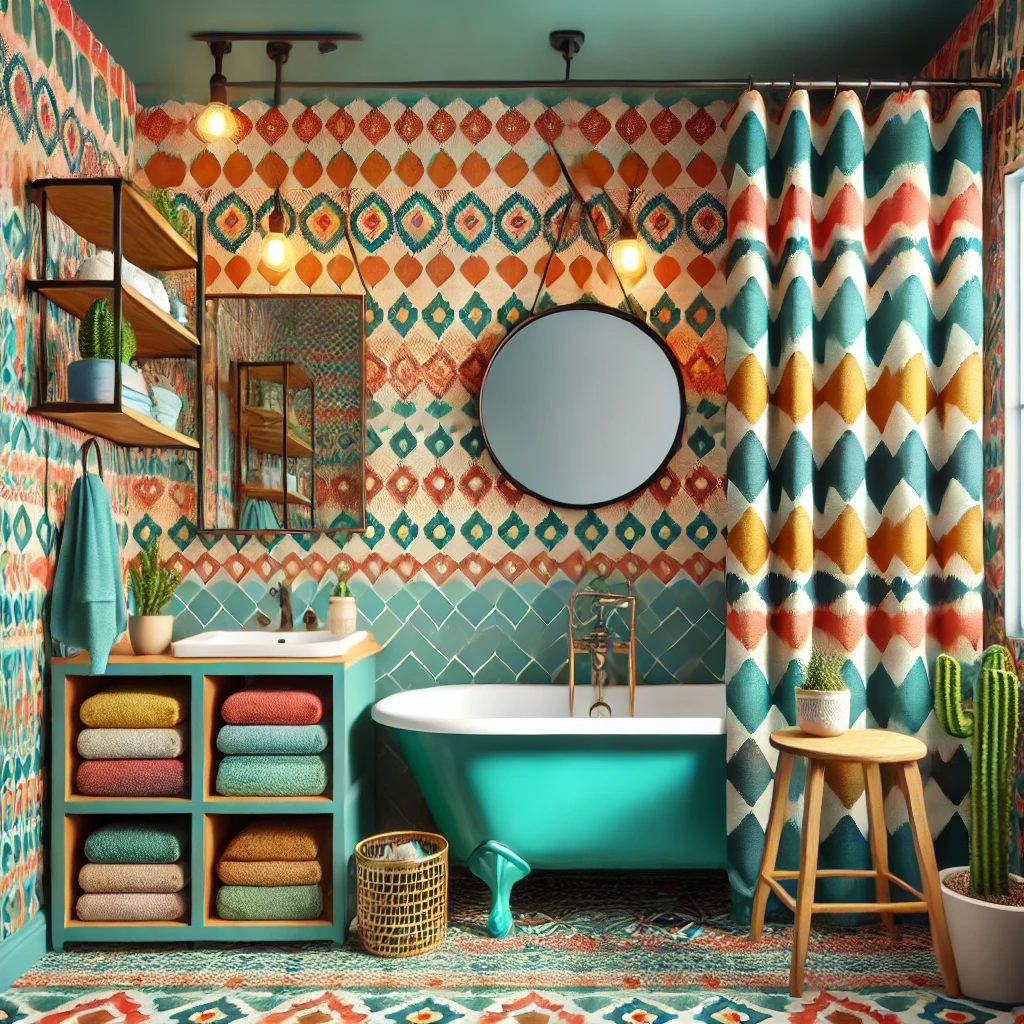
Three Truly Brilliant Upgrades for Your Kitchen Sink (and Why You Should Do Them Right Now)
Introduction
The kitchen sink is the heart of any kitchen. It’s here that we tackle countless daily tasks: washing fruits and vegetables, cleaning dishes after breakfast, lunch, and dinner, and preparing culinary masterpieces for the whole family. When the sink works like a charm, we hardly even notice it. But as soon as a leak, clog, or inconvenient faucet appears, all our attention shifts to the problem.
Luckily, there are a few simple ways to enhance the functionality and appearance of your kitchen sink without resorting to a major kitchen overhaul or spending a fortune. These upgrades will not only increase your comfort but also help save water, time, and energy.
1. Replacing Your Faucet with a Pull-Out Spray Model
Why does this matter?
A new faucet is the most obvious—and often overlooked—upgrade. You might think, “Why replace what’s already working fine?” But imagine how much time you waste trying to rinse out a large pot or wash vegetables at an awkward angle. And if your faucet starts to drip, it’s not only annoying but can also inflate your water bill.
What does a pull-out sprayer do?
A pull-out (or pull-down) sprayer is a faucet attachment that can be extended and aimed wherever you need the water flow. This model allows you to:
- Easily rinse big containers, including large pots and pans.
- Quickly fill a bucket or other container without having to put it in the sink.
- Conveniently rinse vegetables even if the sink is full of dishes.
When I worked in private homes in Texas, homeowners often complained about weak water pressure or the difficulty of washing big pots after barbecues. Installing a new faucet with a pull-out sprayer solved these problems in no time. Some models even come with a flow-switching feature that lets you go from a “shower” spray to a steady stream, depending on your needs.
How much does it cost, and how difficult is it to install?
Prices for pull-out faucets range from budget-friendly (about $40–$50) to premium (up to several hundred dollars). Installation can take anywhere from half an hour to two hours, depending on your sink’s condition and the water supply lines. If you have basic tool skills and don’t mind turning off the water yourself, you can likely handle the installation. However, if you’re unsure, it’s always best to call a professional plumber.
2. Installing a Water Filtration System
Why filter your water?
Tap water often contains impurities that affect its taste and even its smell. Mineral deposits, chlorine, and other substances can gradually impact your health. Additionally, residue from unfiltered water stains plumbing fixtures with white or rusty spots and reduces the lifespan of faucets and appliances.
In Texas—especially in certain areas—the quality of tap water sometimes leaves much to be desired, and it can be tough to manage without a filtration system. In my experience, clients frequently complained about overly hard water, and a simple filter installation solved several problems at once: no more limescale, longer-lasting faucets, and safe drinking water.
What types of filters are available?
- Pitcher filters. The simplest and cheapest option, but also not the most convenient because they require constant cartridge replacement and have limited capacity.
- Countertop filters. Mounted on or near the sink. They filter water directly from the faucet but can take up counter space.
- Reverse osmosis systems. Installed under the sink and come with a separate faucet for drinking water. This is the most effective option, as it removes almost all harmful impurities.
- Whole-house systems. These are installed where the water main enters the home. They’re perfect if you want every faucet in your home to dispense filtered water.
How do you choose the right system?
- Consider how much water you use per day.
- Identify the specific issue that bothers you (scale, odor, taste).
- Check what’s included in the set: you’ll need a special tube for filtered water or a separate faucet.
How do you install an under-sink filtration system?
- Turn off the water supply and remove the drain trap (P-trap) to free up space under the sink.
- Mount the filter, usually securing it to the sidewall inside the cabinet.
- Connect the tubes to the plumbing and the filter.
- If your system requires a separate faucet for drinking water, drill a hole in the countertop or sink (if it’s not already provided by the manufacturer) and install the faucet.
- Once everything is connected, check thoroughly for leaks.
Installation can take a few hours, especially if you’re new to DIY plumbing. But it’s worth the effort: you’ll have clean, great-tasting, safe water for your family.
3. Adding Extra Accessories: Soap Dispensers and Drying Racks
Small details, big convenience
We often think kitchen upgrades are only about major changes like installing new appliances. In truth, a tiny detail can bring unexpected convenience to your routine. Among the most useful accessories for your sink are built-in liquid soap dispensers, pull-out or foldable drying racks, and special cutting boards that can fit right over the sink.
Why do you need a built-in dispenser?
- It saves space on the countertop.
- You always have soap within easy reach—no need to search the kitchen for the bottle.
- It looks tidy and stylish, especially if you match the dispenser to your faucet.
In Texas homes where I installed these, the response was overwhelmingly positive: one press of the pump, and soap is instantly in your hands. No more keeping a bottle perched precariously on the sink’s edge. Before you buy, though, make sure your sink or countertop has an extra hole (or that it’s possible to drill one).
What’s the benefit of drying racks and cutting boards?
- Drying racks that unfold over the sink allow dishes to drip directly into the basin, leaving your countertop free for cooking prep.
- Cutting boards, perfectly sized to fit your sink, provide extra workspace for cutting vegetables, fish, or meat. Juice and scraps won’t get all over your kitchen; they’ll simply rinse away in the sink.
These accessories aren’t expensive—around $10–$30 for a drying rack and $10–$15 for a basic cutting board—but they can add as much convenience as a more costly renovation.
Additional Tips
- Regularly clean the P-trap and drain: Once a month, flush the drain with hot water and vinegar or specialized products to prevent grease and food particles from building up in the pipes.
- Check your O-rings: If water seeps from beneath the faucet, the culprit could be a worn O-ring (gasket). Replacements cost just a few cents and can prevent costly repairs.
- Use eco-friendly cleaning products: Biodegradable cleaning supplies won’t harm the environment or corrode your pipes.
- Pay attention to warranties: Some manufacturers offer up to five years of coverage, which can save you money if something breaks down.
Frequently Asked Questions (FAQ)
Q: I’ve never installed plumbing myself. Should I give it a shot?
A: It all depends on your confidence and basic skills. Installing a faucet or a filter isn’t particularly difficult if you know how to shut off the water and have decent tools. If you’re worried, it’s best to call a professional.
Q: Should I hire a professional to drill a hole in my sink for a dispenser or filter faucet?
A: It depends on your sink’s material. Stainless steel is usually easy to drill, but if you have stone or composite, you might want to leave it to the pros to avoid damaging an expensive fixture.
Q: How often do I need to change the filter cartridges?
A: Every manufacturer has its own guidelines. On average, every 3–6 months for mechanical filters and about every 6–12 months for reverse osmosis systems.
Q: How much water can I save by installing a new faucet with an aerator?
A: You can save about 20–30% compared to older models without modern nozzles. This is especially important where water is expensive or usage is restricted, as in certain parts of Texas.
Conclusion
Your kitchen sink is a cornerstone of daily life. Yet we don’t always notice the little things that can make our lives easier and more pleasant. A pull-out spray faucet will spare you the frustration of awkward washing angles, while a filtration system will provide you and your family with safe, delicious-tasting water. Various accessories—like built-in dispensers and drying racks—can optimize your workspace, making your kitchen more aesthetically pleasing and ergonomic.
You can tackle these upgrades one by one, at your own pace, or take a weekend to do them all and enjoy a “wow” effect by Monday. If you’re short on time or uncertain about your skills, it’s best to call a professional. But if you’re ready to try something new, don’t be afraid: even something as simple as replacing a faucet can turn into an exciting adventure, and the results will surprise you—and your household—pleasantly.
Of course, remember to check your plumbing regularly: replace worn-out O-rings, avoid harsh chemicals, and clear the pipes periodically. By following these simple steps, you’ll keep your home cozy and your budget intact for many years. Good luck, and may your kitchen in Texas—or anywhere else—always shine with cleanliness and convenience!






